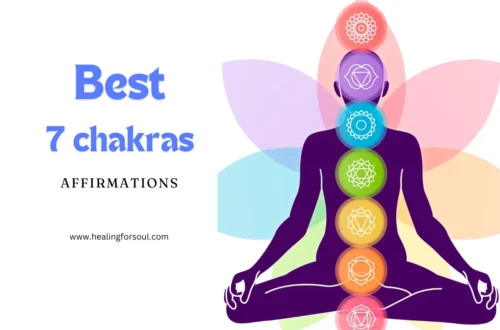What are Transcendental Meditation Mantras?
Defining Mantras
At its core, a mantra is a sound or phrase that is repeated during meditation to help the practitioner focus and achieve a meditative state. In the context of Transcendental Meditation, mantras are more than just words; they are vibrations that resonate with the mind and body to foster tranquility and transcendence.
How Mantras Are Chosen for TM Practitioners
Unlike other forms of meditation, where individuals might select their mantra, TM mantras are traditionally assigned by a certified TM teacher. This selection process is tailored to the individual, taking into account factors like age, gender, and personal characteristics. The personalized nature of this approach is designed to ensure that the mantra aligns with the practitioner’s unique mental and spiritual needs.
The Role of the Mantra in the TM Process
The mantra serves as a focal point that guides the mind away from distractions and into a deep state of meditation. It is not meant to have a specific meaning or be consciously contemplated; rather, it is used as a tool to settle the mind into a quieter, more restful state. As the practitioner silently repeats the mantra, it gradually becomes less clear, eventually leading to a state of “transcendence,” where the mind experiences a profound sense of calm and stillness.
The Importance of Secrecy in TM Mantras
One of the unique aspects of TM mantras is the emphasis on secrecy. The mantra assigned to a practitioner is meant to be kept private, not shared with others. This secrecy is believed to preserve the purity and effectiveness of the mantra, allowing it to work on a deeper level within the individual. The notion is that the mantra is an intimate part of the meditative process, and sharing it might dilute its power or introduce external influences.
Understanding the Concept of Restful Alertness in TM and How Mantras Facilitate It
Transcendental Meditation (TM) aims to induce a state of restful alertness, where the mind is profoundly calm yet fully awake. This state allows for deep inner peace and heightened awareness. Mantras play a pivotal role in achieving this state by serving as a vehicle for attention, allowing the mind to effortlessly settle inward while maintaining subtle wakefulness.
The Profound Benefits of Cultivating a Mantra-based Transcendental Meditation Practice
Cultivating a mantra-based TM practice offers profound benefits that extend beyond traditional meditation techniques. Some notable benefits include:
- Stress Reduction: Mantra-based meditation has been linked to reduced stress and anxiety levels, promoting overall well-being.
- Enhanced Cognitive Function: Regular practice of TM mantras has shown to improve cognitive function, including attention and memory.
- Emotional Balance: Mantra meditation fosters emotional resilience and stability, enabling individuals to navigate life’s challenges with greater ease.
- Spiritual Growth: Through the use of mantras, individuals can experience a deep sense of spiritual connectedness and personal transformation.
- Improved Well-being: Incorporating mantras into your TM practice is a powerful way to improve your overall well-being, as research suggests.
By harnessing the power of mantras in Transcendental Meditation, practitioners can unlock an array of holistic benefits that positively impact their daily lives.
Popular Transcendental Meditation Mantras and Their Meanings
Understanding the specific mantras used in Transcendental Meditation can enhance one’s practice. Each mantra has a unique vibration and significance. Let’s delve into some of the most popular mantras and their meanings:
Ema
“Ema” is a gentle mantra that signifies joy and contentment. It’s often used to evoke feelings of happiness and a sense of well-being. When repeated, it can help dissolve negative thoughts and promote a positive mindset.
Enga
“Enga” is a mantra associated with strength and stability. It helps practitioners feel grounded and centered. This mantra is particularly beneficial for those seeking to build inner resilience and fortitude.
Em
The mantra “Em” is simple yet profoundly calming. It is used to quiet the mind and create a sense of inner peace. Its repetitive sound can lead to deep states of relaxation and tranquility.
Shiring
“Shiring” is a mantra that invokes the essence of healing. It’s often used to promote physical and emotional healing. Practitioners might find themselves feeling more balanced and rejuvenated after meditating with this mantra.
Om Namah Shivaya
One of the most well-known mantras, “Om Namah Shivaya,” is a salutation to Lord Shiva, a principal deity in Hinduism. It translates to “I bow to Shiva,” symbolizing a deep reverence for the inner self and universal consciousness. This mantra is often used to foster a sense of divine connection and inner strength.
Eng
“Eng” is a mantra that promotes clarity and focus. It’s particularly useful for those who feel scattered or overwhelmed. Repeating this mantra can help sharpen the mind and enhance concentration.
Hirim
“Hirim” is associated with love and compassion. It encourages a loving attitude towards oneself and others. Meditating with “Hirim” can open the heart and enhance emotional well-being.
Hiring
Not to be confused with a job search, “Hiring” is a mantra that signifies purification. It helps cleanse the mind of distractions and negative emotions, paving the way for a clearer, more focused state of consciousness.
Ing
“Ing” is a powerful mantra that fosters creativity and intuition. It’s ideal for those looking to enhance their creative capacities and connect with their inner wisdom.
Ram
“Ram” is a mantra that invokes the energy of Rama, a major deity in Hinduism known for his righteousness and virtue. This mantra is often used to cultivate inner strength and moral clarity.
Shiama
“Shiama” is a mantra that brings peace and harmony. It’s particularly effective for calming the mind and alleviating stress. Repeating “Shiama” can create a serene mental environment conducive to deep meditation.
Gaytri
The “Gaytri” mantra is one of the oldest and most revered mantras in Hindu tradition. It is a prayer for enlightenment and wisdom. Meditating with the “Gaytri” mantra can lead to profound spiritual insights and personal growth.
Ayima
“Ayima” is a nurturing mantra that evokes feelings of safety and comfort. It is particularly beneficial for those dealing with anxiety or fear. Repeating “Ayima” can create a sense of security and peace.
Om Shanti
“Om Shanti” is a mantra for peace. “Om” is considered the universal sound, and “Shanti” means peace. This mantra is often used at the end of meditation sessions to seal the practice with a sense of tranquility and harmony.
Mantras For Improved Focus
Ancient Origins and Sacred Meaning of TM Mantras
Tracing the Roots of TM Mantras to the Ancient Vedic Tradition
Transcendental Meditation (TM) mantras have deep roots in the ancient Vedic tradition of India. The Vedic texts, dating back thousands of years, contain profound wisdom and knowledge about consciousness and the nature of existence. The mantras used in TM are derived from these ancient texts, making them a part of a lineage that has been passed down through generations.
Understanding the Symbolism Encoded in Specific TM Mantras
Each TM mantra carries with it a sacred symbolism and meaning that resonates with the individual practitioner. These mantras are not random sounds but are specifically chosen to align with the vibration and frequency conducive to transcending thought and experiencing pure awareness. The vibrational quality of each sound is believed to have a subtle yet powerful impact on the mind and consciousness, leading to profound states of inner peace, clarity, and self-realization.
By exploring the origins and symbolism of TM mantras, practitioners can deepen their understanding of the profound spiritual heritage from which these powerful tools for transformation have emerged.
Choosing and Using a Transcendental Meditation Mantra
When it comes to Transcendental Meditation (TM), the selection of a mantra is a highly personalized process. Each individual is assigned a specific mantra by a trained TM teacher based on their unique nature and needs. This personalized approach ensures that the mantra resonates with the individual on a deep level, making it easier for them to dive into the state of transcendence.
The Personalized Nature of Selecting a Suitable Mantra for TM
The mantra selection process takes into account various factors such as the person’s age, gender, and even their birth date. This ensures that the mantra aligns harmoniously with the individual’s energy and facilitates a smooth journey into the depths of consciousness. By tailoring the mantra to each individual, TM practitioners can experience profound effects that are specifically suited to their personal growth and development.
Guidelines for Effectively Harnessing the Power of Mantras in Your Meditation Sessions
Once you have been assigned a mantra, it is essential to understand how to use it effectively during your meditation sessions. Here are some guidelines to help you harness the power of mantras:
- Silently repeat the mantra: During your meditation practice, gently and effortlessly repeat your assigned mantra in your mind. Allow it to become the focal point of your attention, letting go of any other thoughts or distractions that may arise.
- Allow thoughts to come and go: While repeating your mantra, thoughts may naturally arise in your mind. Rather than trying to suppress or control them, simply observe them without judgment and let them pass by. Return your attention to the mantra whenever you find yourself getting caught up in thoughts.
- Maintain a relaxed and effortless approach: Avoid putting effort or strain into repeating the mantra. It should flow effortlessly, like a gentle stream of consciousness. Allow yourself to surrender to the rhythm and sound of the mantra, letting it carry you deeper into the state of transcendence.
Incorporating Mantras Seamlessly into Your Daily Routine of Transcendental Meditation
Transcendental Meditation is not limited to the time spent on your meditation cushion. It can be seamlessly integrated into your daily routine to enhance mindfulness and well-being. Here are some ways to incorporate mantras into your daily life:
- Morning mantra practice: Begin your day by silently repeating your mantra for a few minutes before getting out of bed. This sets a positive and focused tone for the day ahead.
- Mantra breaks: Take short breaks throughout the day to silently repeat your mantra, even if only for a minute or two. This helps to bring you back to the present moment and cultivate a sense of calm amidst the busyness of daily life.
Enhancing the Mantra Experience in Advanced TM Practice
As you progress in your Transcendental Meditation practice, you may explore advanced techniques that further deepen your experience with mantras. These techniques include:
- Mantra infusions: Infusing your daily activities with the silent repetition of your mantra, such as while walking, exercising, or engaging in creative pursuits. This helps to maintain a state of mindfulness and connectedness throughout the day.
- Group meditations: Participating in group meditations where everyone silently repeats their mantras together can amplify
Deepen Your Transcendental Meditation Journey with These Resources
When exploring Transcendental Meditation (TM), it’s helpful to have access to resources that can enhance your practice. Below are some valuable resources to help you deepen your TM journey:
1. Recommended Books on Transcendental Meditation and Mantras
There are several insightful books available that can provide in-depth knowledge and guidance on TM and the significance of mantras. Some notable recommendations include:
- “The Science of Being and Art of Living” by Maharishi Mahesh Yogi
- “Transcendence: Healing and Transformation through Transcendental Meditation” by Norman E. Rosenthal
- “Mantra Meditation: Change Your Karma with the Power of Sacred Sound” by Thomas Ashley-Farrand
2. Introduction to the Aura Health App – A Digital Companion for Your TM Practice
The Aura Health app offers a modern approach to supporting your TM practice. It provides a variety of features such as guided meditation sessions, personalized meditation recommendations, and tools for tracking your mindfulness journey. Additionally, the app delivers relevant insights and resources tailored to enrich your experience with TM mantras.
By using these resources, you can:
- Gain a deeper understanding of Transcendental Meditation
- Harness the power of mantras more effectively
Whether through books or digital tools like the Aura Health app, these resources are designed to complement your TM practice and contribute to your spiritual growth and mindfulness.
FAQs About Transcendental Meditation Mantras
What is the purpose of a mantra in Transcendental Meditation?
A mantra in Transcendental Meditation is used as a focal point to help the mind settle into a state of deep relaxation and heightened awareness. It serves as a tool to transcend ordinary thought processes and achieve a state of inner peace.
Can I choose my own TM mantra?
While it is possible to select your own mantra, it is generally recommended to receive a mantra from a certified TM teacher. This ensures that the mantra is tailored to your personal needs and characteristics, enhancing the effectiveness of your meditation practice.
Why are TM mantras kept secret?
TM mantras are kept secret to preserve their purity and effectiveness. Sharing the mantra with others might introduce external influences that could dilute its power or disrupt its intended effect.
What are the benefits of using a mantra in meditation?
Using a mantra in meditation can help focus the mind, reduce stress, and facilitate deeper states of relaxation and awareness. It can also support personal growth and spiritual development by guiding the practitioner into more profound meditative experiences.
How do I know if a mantra is right for me?
The right mantra for you will resonate on a personal level, making your meditation feel more effortless and rewarding. You might feel a natural connection to the mantra, and it should help you achieve your meditation goals, whether they are stress relief, creativity, or spiritual growth.
Can I change my mantra over time?
While it is possible to change your mantra, it is usually recommended to stick with one mantra to allow it to deepen in your practice. However, if your needs or goals change, consulting a TM teacher about adjusting your mantra might be beneficial.
Conclusion
Transcendental Meditation offers a profound path to meditation, mindfulness, spiritual growth, and relaxation. By incorporating mantras into your practice, you can unlock the full potential of this ancient technique. Embrace the power of mantras as a gateway to inner peace and self-discovery. Allow them to guide you on a transformative journey towards lasting mindfulness and spiritual fulfillment.






